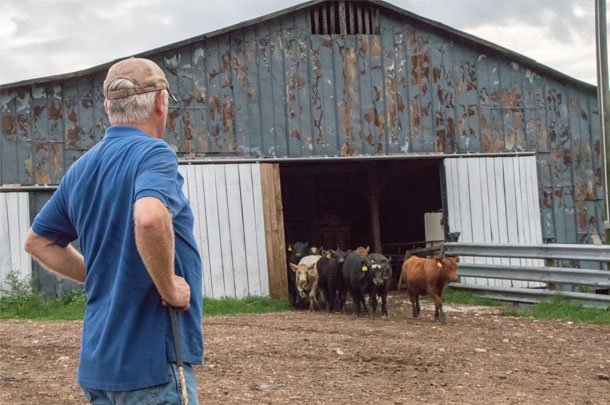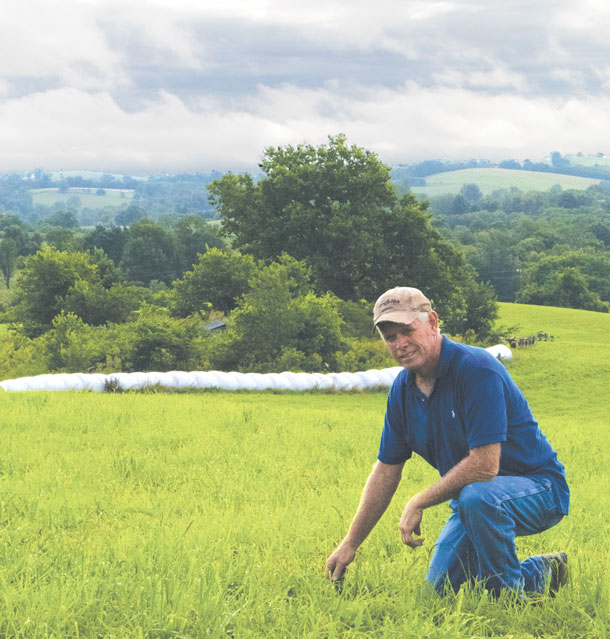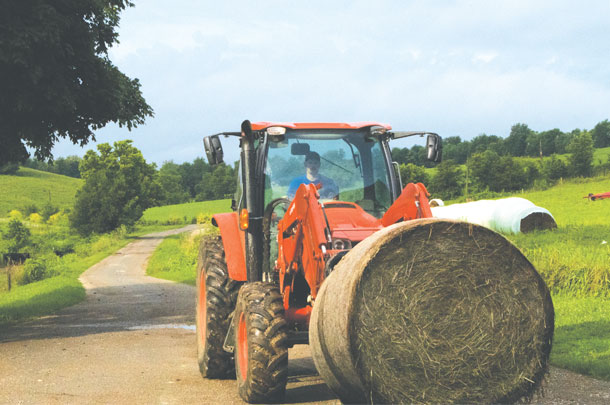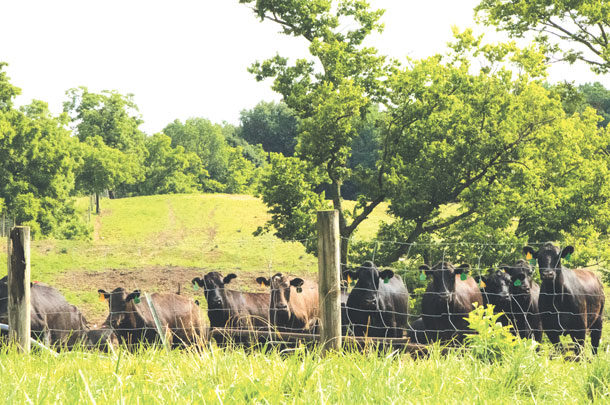Ronnie Cooper’s father and two uncles ran a backgrounding program for steers in the hilly area near Stanford, Kentucky, for many years. In 1990, Ronnie started in the stocker business with his dad and uncle, and his brother-in-law Tony Honaker joined in 1997. For the past 28 years, the stocker system worked. But today, not so much.
“Managing stockers is like dairying in that it has intense labor needs,” Cooper says. “If you’re not picking up cattle at sales, processing or loading out, you’re treating for sickness nearly every day. And labor is harder and harder to come by.” In the stocker program, Cooper and Honaker put together a load of cattle for sale or else buy a load of cattle three weeks out of every four. New cattle are constantly cycling through, and truckloads of cattle ready for the feeder market are sorted and shipped weekly.

“Years ago, our operation wasn’t this labor-intensive,” Cooper says, “but we expanded with row crops and leasing and buying more land to run more cattle on. We’re going to pull back a bit now and go to a system that isn’t quite as time-consuming.” Their expansion took them up to 980 acres, 300 acres of which is leased. They have rotated 2,500 to 2,600 head of stockers through the pastures per year, with about 600 head on hand at any given time.
Three silos tower above Cooper’s working corrals. They hold chopped wheat silage and corn silage. Typically, wheat silage is chopped mid-May, and corn silage is planted behind it in a double-cropping system. They also double crop ryegrass before silage, prepping the soil with a light disc till. “One reason I went to rye was because I can get it off two to three weeks quicker than wheat baleage. I can plant it in fall after I combine corn or beans, and then I can roll rye for wrapped hay earlier in the spring,” Cooper says.
Cooper is an overseer of one of seven in-line wrappers owned by Lincoln County Farm Bureau. In the 2012 USDA survey, Lincoln County was sixth in total beef cow numbers; fifth in acres used for all hay, haylage, grass silage and greenchop; and fifth in all hay and silage tonnage produced in Kentucky.

Around 2003, during the tobacco buyout, the county received funding from the Kentucky Agricultural Development Fund and used some of the funds to buy equipment like no-till planters, post drivers, pasture sprayers, broadcast seeders, lime spreaders, chain drags and in-line bale wrappers.
Many of Kentucky’s farms were smaller-sized, and producers found purchasing equipment cost-prohibitive relative to farm size and income. The funding provided producers with equipment that could be rented from the county. Cooper schedules those rents for one in-line wrapper and also rents the in-line wrapper himself. The busiest time for the in-line bale wrapper is early May, he says, but if a rain event later in the summer prevents someone from putting up dry hay, they often use the in-line wrapper as an alternative storing method.

Cooper says using a straw bale as an end bale in the roll prevents a “bad bale” or prevents a higher-quality hay bale from spoiling as the straw bale absorbs the moisture. When he stacks dry hay bales in the barn, he also spaces straw bales under stacker loads to absorb moisture from the ground, preventing “bottom bale syndrome.”
Cooper and Honaker also put up hay from fields of alfalfa mixed with orchardgrass. They put up 10,000 to 12,000 small square bales from a four- to five-cut system. They’ll also wrap 2,000 round bales in a normal year. Their alfalfa fields typically last seven to eight years.
In their stocker program, Cooper and Honaker buy 400-weight steers (or whatever the market dictates at the time, which can be 400 to 600 weights) with a target of adding 2 to 2.25 pounds of gain per day to steers and 1.5 pounds for heifers, adding about 200 pounds per head in total.
Through the winter, calves are run on pasture but supplemented with corn silage or small-grain silage in pasture feedbunks. When a truckload-capacity group has reached feeder weight, they’re shipped – sometimes to off-farm buyers and sometimes to local auction barns.
Cooper and Honaker will keep about 150 stockers in their future plans with the intent to use them, along with hay sales, to help cash flow in the new cow-calf system. In the meantime, they’ve purchased 180 mama cows with the intent to reach 200 to 240 total head in two herds – one spring-calving group and one fall-calving group.
While Honaker’s son Cameron has been available to help with the stocker operation, his future plans will preclude him from helping, compounding the labor issue for Cooper and Honaker. Cooper says, “Cameron has been a big help, but he’s going to start a four-day-a-week job off the farm, and that’s going to be cutting into the time he can spend with us. And it’s just time for me to slow up a little bit – good help is hard to find.”
Sometimes what has worked for years just doesn’t work anymore, and it’s time to make a change. Cooper Brothers Farm is ready to adapt and roll forward in a new direction. ![]()
PHOTO 1: Stockers out in the pasture.
PHOTO 2: Stockers are sorted in preparation for shipping to a local auction yard at Cooper Bros. Farm in Lincoln County, Kentucky.
PHOTO 3: Ronnie Cooper examines an alfalfa-orchardgrass stand in June 2018.
PHOTO 4: Round bales are wrapped using a rental program through the Lincoln County Farm Bureau in-line wrappers. Photos by Lynn Jaynes.

-
Lynn Jaynes
- Editor
- Progressive Forage
- Email Lynn Jaynes











